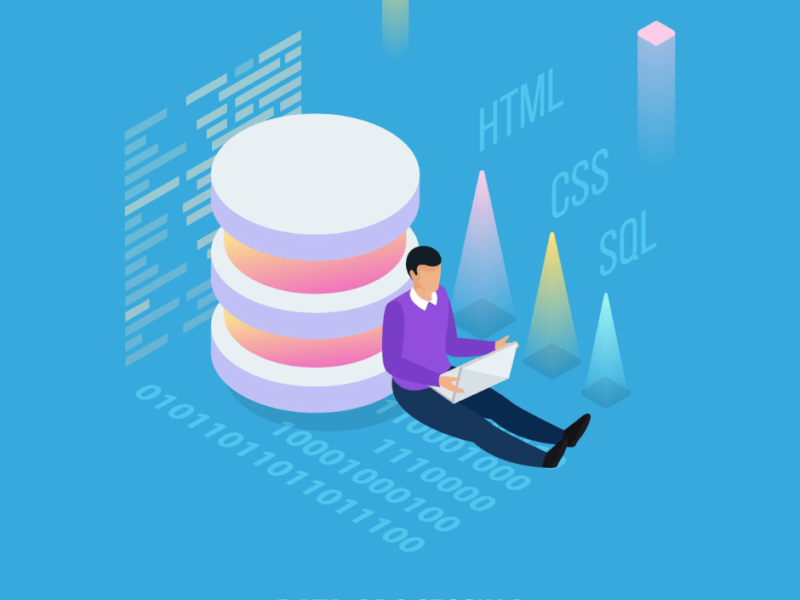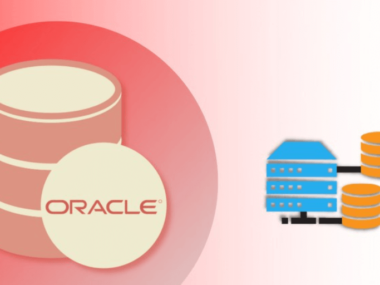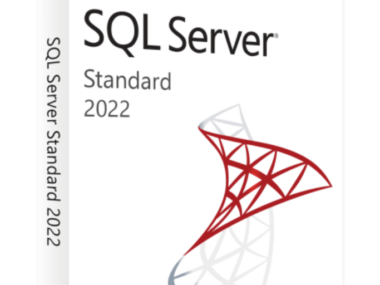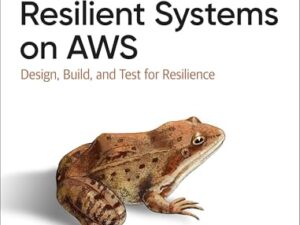Also Read
What is the PostgreSQL Database? PostgreSQL is an advanced, open-source relational database management system (RDBMS). It excels in extensibility and SQL compliance.
PostgreSQL, also known as Postgres, has a strong reputation for reliability, robustness, and performance. It performs well under a variety of workloads. They developed it over 30 years.
From single machines to data warehouses, it handles a range of workloads. Developers favor it. They want a sophisticated, scalable database solution. PostgreSQL supports advanced data types and performance optimization features. This makes it suitable not just for transactions but also for complex analytics.
The platform is highly customizable. It supports stored procedures, allowing developers to fine-tune their database environments. Enterprises and startups trust PostgreSQL. Its community-driven development model ensures continuous innovation and feature enhancements. It is free to use for commercial or personal projects.
Understanding Postgresql
Welcome to the intricate world of database management systems. PostgreSQL stands out as a competent and robust open-source option.
In this section, we’ll explore the details of PostgreSQL. This includes its definition and historical roots. It also explains how it fits into the broader landscape of databases.
Embark on a journey to understand PostgreSQL. It’s an advanced DBMS that powers many of today’s demanding applications.
Definition of Postgresql
PostgreSQL is an advanced open-source relational database management system (RDBMS). It is commonly referred to as Postgres. It provides a strong foundation for handling a variety of workloads.
Its proven architecture, reliability, and data integrity are well-reputed. It also offers a robust feature set and extensibility. Notably, PostgreSQL supports SQL (relational) and JSON (non-relational) querying. This makes it incredibly versatile for different types of data.
Its ability to efficiently handle concurrent transactions makes it a top choice for businesses and developers globally.
History And Development
PostgreSQL was born from the POSTGRES project at the University of California, Berkeley. It has a rich history dating back to its inception in 1986.
The initial development focused on extending the capabilities of contemporary RDMBSs. Postgres has evolved significantly over the years. It transitioned to an open-source model in 1996. A dedicated and knowledgeable community has maintained and updated it.
Many original concepts and innovations from Berkeley’s POSTGRES are still at the heart of PostgreSQL today. They have been continually refined to meet modern challenges.
Postgresql’s Relationship With Other Databases
-
It operates on a client-server model, similar to MySQL and Oracle. This allows multiple clients to access the database concurrently.
-
PostgreSQL provides broader compliance with SQL standards than MySQL. This leads to fewer surprises and better cross-database compatibility.
-
When compared to NoSQL databases like MongoDB, PostgreSQL offers ACID transactions. This is a crucial factor for systems requiring strong data integrity.
-
It has an advanced feature set, including support for PostGIS. This makes it effectively compete with specialized systems. It competes with systems like Oracle Spatial and Graph.
-
The ability to define custom data types and functions makes PostgreSQL highly extensible. This sets it apart from simpler RDBMSs. It appeals to developers seeking specific solutions.
PostgreSQL has a rich feature set, compatibility, and extensibility. This makes it a compelling choice for anyone seeking a sophisticated open-source RDBMS. It can compete with commercial offerings.
Postgresql’s Powerful Features
PostgreSQL stands tall as one of the tech world’s foremost open-source relational database systems. Esteemed for its robustness,
PostgreSQL offers a suite of features tailored to empower developers and organizations to manage and analyze their data efficiently.
Let’s delve into a few of the powerful capabilities that mark PostgreSQL as the go-to database solution for a myriad of applications.
Data Types And Extensibility
One of PostgreSQL’s standout features is its rich support for various data types. This flexibility is crucial for developers aiming to handle diverse datasets.
-
Native Data Types: Native data types include primitive types like integers and floats. There are also more complex geometrical and network types.
-
Custom Data Types: Users can define their data types. This makes PostgreSQL highly customizable.
-
Full Text Search: Full Text Search incorporates sophisticated text search capabilities. These capabilities are essential for applications dealing with large volumes of text-based data.
PostgreSQL offers an unparalleled level of extensibility. Plugins and extensions add new functions, data types, and languages. You can write them directly into the database.
Acid Compliance And Resilience
Business-critical applications require a database that guarantees data integrity and transaction reliability. PostgreSQL is fully ACID-compliant (Atomicity, Consistency, Isolation, Durability), ensuring that all transactions are processed reliably.
| Feature | Description |
|---|---|
| Atomicity | Guarantees that all operations within a transaction are completed successfully or none are performed at all. |
| Consistency | Ensures that the database is always in a consistent state after each transaction. |
| Isolation | Keeps transactions independent from each other and protects concurrent transaction data from inconsistency. |
| Durability | Once a transaction is committed, the data is saved by the system such that, even in the event of a crash, the data is not lost. |
To bolster resilience, PostgreSQL incorporates continuous archiving point-in-time recovery (PITR) and robust replication features to ensure data safety and high availability.
Scalability And Performance Optimization
Regarding scaling operations, PostgreSQL proves to be a powerhouse capable of handling large volumes of data and a high number of concurrent users.
Features like table partitioning and parallel query execution dramatically enhance query performance.
- Advanced Indexing: It offers a variety of index types, such as B-tree, Hash, GiST, SP-GiST, and GIN.
- Parallel Processing: Takes advantage of modern multi-core CPUs to execute queries in parallel for faster processing.
- Foreign Data Wrappers: Allows PostgreSQL to access and manage data stored in other databases like a local one, streamlining federated queries.
With these features, PostgreSQL effectively supports read-heavy operations, write-heavy workloads, and sophisticated analytics, all while maintaining optimal performance.
Managing Postgresql Databases
Effectively managing PostgreSQL databases is crucial. It ensures the robust performance and reliability of applications. They rely on this powerful database management system.
Understanding PostgreSQL’s management can streamline database operations, whether you’re a seasoned database administrator or just starting with PostgreSQL.
Let’s dive into the core aspects of PostgreSQL management. This includes installation, configuration, and the intricacies of database design.
Installation And Configuration
First, ensure the software is installed correctly and configured on your server. Then, you can manage PostgreSQL databases.
Installation typically involves downloading the latest version of PostgreSQL from its official website. Then, follow platform-specific instructions.
Once installation is complete, configuration is key. The postgresql.conf file is central to this process. It allows administrators to adjust settings. They can change memory usage, connection limits, and authentication methods.
Optimizing these configurations is vital for creating a stable and efficient database environment.
# Sample postgresql.conf snippet max_connections = 100 shared_buffers = 4GB listen_addresses = ‘‘
To manage PostgreSQL databases effectively, familiarize yourself with the command-line tools. For example, use psql to interact with the database, and pg_ctl to control the server process.
The Role Of Databases, Schemas, And Tables
To manage a database in PostgreSQL, you must understand the hierarchy of databases, schemas, and tables.
Databases serve as the top-level containers. They can house multiple schemas. Schemas act as namespaces or logical groupings for tables and other database objects. Tables, in turn, hold the actual data in rows and columns.
- Databases are separate sets of schemas and tables. They are often used to divide distinct applications or environments.
- Schemas: Logical groupings that help organize and manage tables, views, and other objects
- Tables: Structures that store actual data in a row-based format
Administrators must carefully manage these components. They set permissions and roles to control access while also maintaining database integrity.
Effective Data Modeling And Database Design
At the heart of database management lies effective data modeling and database design. Structuring your database properly can improve performance, scalability, and maintainability. Proper data modeling involves defining tables and choosing appropriate data types. It also consists in establishing relationships through foreign keys.
- Normalization ensures data is structured to minimize duplication and promote data integrity.
- Indexing: Implementing indexes to speed up query responses
- Partitioning: Splitting large tables into more manageable pieces to enhance performance
Meticulous design plays a paramount role in avoiding future pitfalls. It also ensures that the database can meet the demands of growing applications.
By focusing on these aspects of PostgreSQL management, organizations can ensure that their database environment is robust, secure, and fine-tuned for their specific needs.
Security In Postgresql
Security in PostgreSQL is a paramount aspect of its robust architecture. This advanced open-source database boasts a comprehensive suite of security features. It ensures that data remains protected and inaccessible to unauthorized users.
PostgreSQL delivers peace of mind to developers and businesses alike. It does so through sophisticated authentication mechanisms. It also encrypts data at rest and in transit. Plus, it is committed to formidable security practices.
Authentication And Authorization
PostgreSQL offers various authentication methods to verify users’ identities.
The pg_hba.conf file is the heart of PostgreSQL’s authentication system. It determines who can access which databases and from where. Key authentication methods include:
- Password: Simple username and password checks.
- Kerberos: Integrates with enterprise-level authentication services.
- SSL certificates: Uses secure certificates for verification.
- LDAP: Ties in with existing directory services.
- SCRAM-SHA-256: A secure password-based authentication method.
Once authenticated, PostgreSQL employs thorough authorization controls to manage permissions. Database roles and privileges dictate what actions a user can perform. This ensures that only authorized users have access to sensitive data.
Securing Data At Rest And In Transit
PostgreSQL allows encryption through the Tablespaces feature. It also offers encryption for individual columns using pgcrypto functions. This ensures sensitive data is safeguarded even if system security is compromised.
PostgreSQL uses Secure Sockets Layer (SSL) to encrypt data. It encrypts data as it moves between the database server and clients. Using SSL makes sensitive information obscure and invulnerable to interception during communication.
# Example to force SSL connections in Postgresql.conf ssl = on
Best Practices For Securing Postgresql Databases
Adhering to best practices is crucial. It maintains the security integrity of PostgreSQL databases. Some of these practices include:
- Make regular updates to keep PostgreSQL and its extensions up to date. This ensures the latest security fixes are in place.
- Follow the Least Privilege Principle. Grant the minimum access users need to perform tasks.
- Strong Password Policies: Enforce complex passwords and regular changes to prevent unauthorized access.
- Use connection limiting to restrict the number of concurrent connections. This reduces the risk of denial-of-service (DoS) attacks.
- Implement comprehensive database auditing. Track and analyze all database activities. Look for unusual behavior.
- Apply secure settings in the postgresql.conf and pg_hba.conf files to tighten security.
Organizations can significantly strengthen their PostgreSQL databases against breaches. They can do this by diligently applying best practices. This ensures data integrity and maintains customer trust.
Postgresql For Application Development
The technological landscape is ever-changing. The surge of data-driven applications has created a greater need than ever for a robust, scalable, and versatile database system.
PostgreSQL is a powerful open-source object-relational database system. It emerges as a beacon of hope for developers. They want to build complex applications with diverse data workloads.
Let’s delve into how PostgreSQL caters to the intricacies of application development.
Integration With Programming Languages And Frameworks
PostgreSQL stands out for its extensive support for various programming languages and frameworks.
This compatibility streamlines the development process. It also allows developers to work in an environment that suits their skills and project needs.
- Python developers can easily integrate PostgreSQL with Python applications. They can use libraries such as psycopg2.
- Java: JDBC enables developers to connect their Java applications with PostgreSQL. It ensures seamless data management.
- Ruby on Rails benefits from ActiveRecord. ActiveRecord simplifies database interactions in Ruby applications.
- Node.js applications can use packages like pg to communicate with PostgreSQL databases. They do this using JavaScript and Node.js.
Utilizing Stored Procedures And Triggers
Stored procedures and triggers are potent tools in PostgreSQL. They enhance application logic and maintain data integrity.
Stored procedures allow developers to execute complex operations within the database. This reduces traffic between the app and the database server.
Triggers, on the other hand, can perform functions upon specific events in the database automatically. This feature is handy for tasks such as:
- Automatically updating related data across tables.
- Enforcing business rules consistently.
- Maintaining audit logs for data changes.
Developers can define these procedures and triggers using SQL and PL/pgSQL. This integrates sophisticated data manipulation and control directly into the database.
Leveraging Postgresql For Modern Application Demands
In app development, it’s crucial to adapt to the latest trends and meet user expectations. PostgreSQL is particularly adept at catering to modern application demands, attributing to its:
Feature Description: Scalability is handling large volumes of data and concurrent users. It achieves this through strategies like replication and partitioning. JSON Support includes Native JSON and JSONB data types. They facilitate unstructured data handling, which is crucial for modern web applications.
Multiversion concurrency control (MVCC) ensures data consistency. It also enables simultaneous reads and writes. Extensibility supports creating custom data types, functions, and even languages. It extends its capabilities.
PostgreSQL’s feature set aligns perfectly with the needs of sophisticated, next-generation applications. It can establish real-time data interactions with event triggers. It can also manage diverse data sets within a single system.

Credit: www.enterprisedb.com
Frequently Asked Questions About What Is The Postgresql Database?
What Is Postgresql Used For?
PostgreSQL is an advanced open-source database management system. It’s used for storing, organizing, and retrieving complex data.
Businesses use it for its reliability. It has a robust feature set and supports SQL and JSON querying.
How Does Postgresql Ensure Data Security?
PostgreSQL provides robust security features. It has a strong access-control system. It uses encryption for data-at-rest and data-in-transit. It also has fine-grained auditing capabilities.
These help safeguard sensitive data and ensure compliance with various security standards.
Can Postgresql Handle Big Data?
Yes, PostgreSQL can handle big data efficiently. It supports indexing large datasets. It supports partitioning for query optimization. It has extensive concurrent processing capabilities.
It’s also extensible for custom data types and functions. It’s suited for big data applications.
What Are The Benefits Of Using Postgresql?
PostgreSQL offers ACID compliance for transaction reliability. It also offers multi-version concurrency control for performance and extensibility for customizations.
It’s feature-rich and scalable. It supports various programming languages and has a strong community. This makes it beneficial for diverse applications.
Conclusion of What is the PostgreSQL Database
Understanding PostgreSQL is key to unlocking its potential. This powerful, open-source database system exemplifies reliability and flexibility.
It’s the go-to for managing diverse datasets, from minor to massive. Embracing PostgreSQL can revolutionize data handling in your projects. It ensures robust performance and scalability.
Ready to explore PostgreSQL for your database needs?













2 comments
Greetings, I noticed that you recently visited my weblog. In an effort to repay the favor, I am composing this message to suggest that you consider incorporating some of your suggestions into my own site.
Simply want to say your article is as astounding.
The clearness to your submit is just cool and
i can suppose you’re a professional on this subject.
Fine with your permission let me to grasp your RSS
feed to keep updated with imminent post.
Thank you 1,000,000 and please carry on the gratifying work.